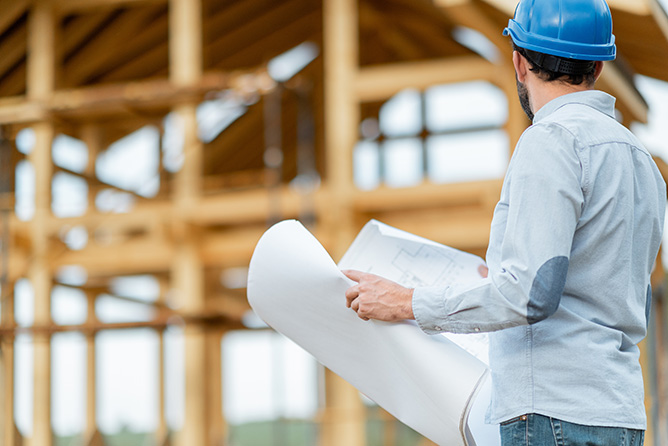Rebuilding after a bushfire: Managing the building process as an owner-builder

If you choose to be an owner-builder, you are not just taking on the significant role of the builder during construction, you are also taking on all of their responsibilities. This can be very satisfying but is hard work and may not be any cheaper than using a builder.
Before you can start as an owner-builder, you must complete construction induction training through a Registered Training Organisation and obtain a Certificate of Consent from the VBA to carry out domestic building work.
The VBA also requires you to demonstrate your understanding of an owner-builder’s duties and obligations by completing an online knowledge assessment.
As an owner-builder, you can either contract out all or part of the building work to qualified tradespeople, or complete the work yourself, with the exception of work that must be done by a registered or licensed tradesperson (e.g. plumbing, gasfitting or electrical work).
If you contract out part of the building work and the total cost for that work (including materials and labour) is more than $10,000, you must enter a major domestic building contract with a registered builder or registered tradesperson.
Certain trades – such as glaziers, painters, and floor and wall tilers – do not need to be registered with the VBA, unless they are taking on two or more trade roles and the contract price exceeds $10,000.
If the contract price is more than $16,000, registered builders, contractors and trades must provide you with a copy of their domestic building insurance to cover you if they die, become insolvent or disappear. This is in addition to their contractual obligations and warranties.
As an owner-builder, your role comes with certain responsibilities. For instance, you must appoint a registered building surveyor and obtain a building permit for your project before construction can commence. Your building surveyor will also carry out mandatory inspections during the build and issue an Occupancy Permit at the end of the project.
During construction, you must maintain occupational health and safety on site and check that all completed work complies with the building regulations and standards associated with Victoria’s Building Act, Domestic Building Contracts Act and Building Regulations.
The VBA also recommends owner-builders take out liability insurance to cover a range of risks, including public risks, accidents, theft, fire and storm damage, and personal injury.
When rebuilding your home in a bushfire-prone area (BPA), you will need to obtain a bushfire attack level (BAL) assessment. All new homes constructed in a BPA must be built to a minimum BAL 12.5 to help withstand ember attack. Higher construction levels may be required, however, depending on the outcome of your BAL site assessment.
If you are building in an area of extreme bushfire hazard, your property is likely to be in a Bushfire Management Overlay (BMO). If this is the case, your council will have certain planning requirements, and you will need to apply for both a planning permit and a building permit.
Before applying for a building permit, it is important to get a realistic estimate of the cost of building work from an architect, building surveyor, quantity surveyor or registered builder. Owner-builders often underestimate their project costs and run out of money before construction is complete, so adding 10 per cent to the estimated cost is recommended as a contingency.
Consideration also needs to be given to the cost of materials and labour. Owner-builders will typically pay more than a registered builder for materials and specialist trades, such as plumbers and electricians, while long distances or work in remote areas may add additional costs.
When hiring trades, it is important to check that their qualifications and registration allow them to do the work you require. The VBA’s Find a Practitioner portal (vba.vic.gov.au/find) lists registration details for many industry professionals, including builders, building surveyors, engineers and plumbers.
Once building work is complete, owner-builders (like registered builders) are responsible for repairing any major building defects up to 10 years after an Occupancy Permit was issued, even if their property is sold or resold. This protects new and subsequent owners should problems arise.
The VBA’s Owner-Builder Study Guide outlines essential information about being an owner-builder, including the responsibilities of the role. It also sets out the steps you must take to complete your application.
To find out more about becoming an owner-builder, visit vba.vic.gov.au/owner-builders.
